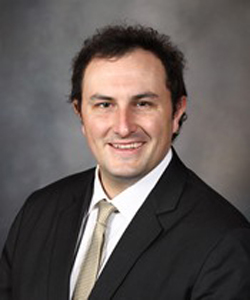Program Information
Quantifying the Dose Distribution of OBI CBCT Using Monte Carlo Simulations with a Measurement-Based Source Model
K McMillan1*, J DeMarco2, S Tenn2, P Chow2, M McNitt-Gray1, D Ruan2, (1) UCLA School of Medicine, Los Angeles, CA, (2) UCLA Department of Radiation Oncology, Los Angeles, CA,
TU-G-103-7 Tuesday 4:30PM - 6:00PM Room: 103Purpose: To test the feasibility of using a measurement-based source model in Monte Carlo simulations to calculate in-phantom 3D dose distributions, with the application to kV-CBCT dose quantification on a Varian OBI platform.
Methods: A 3-part nested CTDI phantom was used in this investigation. It contains 7 tracks in the x-y plane that can be probed. The central reference point of the phantom was aligned at machine isocenter, and using standard head and pelvis CBCT protocols, point dose measurements were made at various 3D locations with a 0.6cc thimble ionization chamber by moving the phantom along the z-direction and changing the ionization chamber position among the tracks under repetitive scans. We have generated a measurement-based source model for the OBI system and incorporated it with the Monte Carlo software MCNPX to model each CBCT protocol under examination. The in-phantom CBCT dose (mGy per particle) was simulated at all 3D measurement locations and converted to absolute dose (mGy) by normalizing with the ratio between measured and Monte Carlo simulated dose at the reference center. The calculated results were compared with the physical measurement and their discrepancies were assessed quantitatively.
Results: Agreement was observed between Monte Carlo simulation results and in-phantom measurements for both the OBI CBCT head and pelvis protocols. For the head protocol, the average agreement was 3.40% with a maximum and minimum disagreement of 5.72% and 1.61%, respectively. For the pelvis protocol, the average agreement was 3.18% with a maximum and minimum disagreement of 4.29% and 1.87%, respectively.
Conclusion: We have demonstrated the accuracy of a measurement-based OBI source model to reproduce an array of measured point doses in phantom when using the CBCT mode of operation. These results serve as the basis for using this source model to investigate OBI dosimetry with anthropomorphic phantoms and patient specific models.
Funding Support, Disclosures, and Conflict of Interest: (a) Dr. McNitt-Gray: Institutional research agreement, Siemens AG; Recipient research support Siemens AG; Consultant, Flaherty Sensabaugh Bonasso PLLC; Consultant, Fulbright and Jaworski, LLC; (b) Dr. Dan Ruan: Recipient research support AACR; Recipient research support TRDRP; (c) K McMillan: Research partially supported by a grant from Siemens AG; Research partially supported by a grant from AACR; Research partially supported by a grant from TRDRP
Contact Email:


